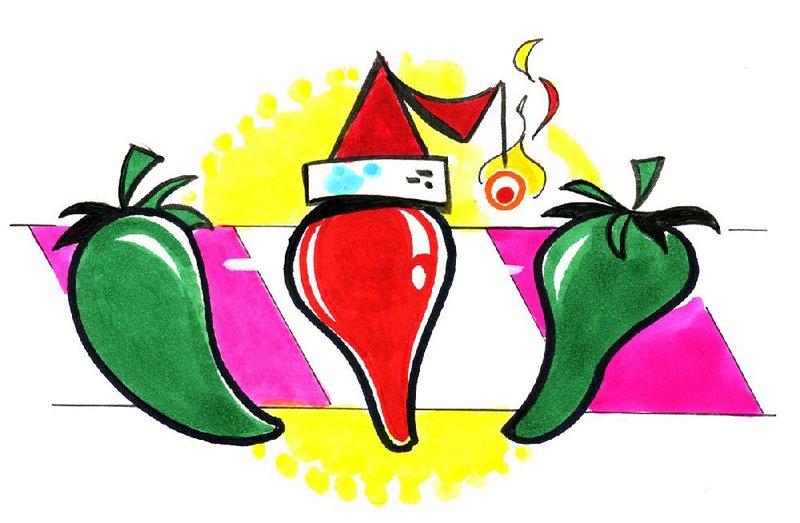Q With the freeze forecast recently, I harvested the remaining peppers on my one jalapeno plant. They were all dark green. Overnight, they all turned red. Why? Can we still use them?
A Jalapenos often turn red if you leave them on the plant long enough. It is just like picking green tomatoes and bringing them inside. They continue to age and turn red. They should be perfectly safe to eat. I found some of my last ones were much hotter than they were earlier in the season, so beware.
Q I have areas in my yard that are landscaped with rocks which are spread over landscaping cloth. Does granular fertilizer applied around the base of the shrubs eventually dissolve and feed the roots, or am I wasting my fertilizer?
A Landscape fabric is breathable, so water and oxygen work their way into the soil. The fertilizer should dissolve and work its way in as well. It just may take a little more time.
Q I have a 12-year-old "Bloodgood" maple that has small holes in the bark that I just noticed. They are seeping sap. What is happening?
A Are the holes scattered or in a pattern, either straight up and down the trunk or in a ring around the trunk? If they are scattered, it could be an indication that you have a boring insect. If the holes are patterned, you would have woodpecker or sapsucker activity. Depending on how thin the outer bark is and how frequently these birds feed, you can get some sap bleeding. It won't hurt the tree, but it can be unsightly. Scare devices or wrapping the trunk with a tree wrap temporarily can help.
Q In the spring of this year before the perennials started to come up, my flower bed was almost covered with wild violets. Needless to say, I did not want them. Is there anything I can do ahead of time to kill them before they start in 2016?
A I am in the same boat as you are -- or should I say garden? Wild violets are very difficult to control without chemicals, and even with chemicals, they are difficult. I have them so mixed in with perennials and shrubs that herbicides are out of the question. I attack with a string trimmer in the spring and early summer and then put down cardboard or newspapers under the mulch and around my desired plants. It gives me a season free until the next year. I am hoping eventually to wear them out, but I don't see that happening in the foreseeable future. Pre-emergent herbicides won't work on perennial weeds, which wild violets are. If you have the stamina to dig and sift out the tiny bulblets, that can help. But I doubt you will get them all.
Q My Meyer dwarf lemon tree is losing its leaves. It has new growth also. I water it once a week, and I fertilize it with Miracle-Gro every three months. What am I doing wrong?
A There are many factors that could be in play. If you just recently moved the tree inside, it could be shedding leaves due to a change in conditions. The later you wait to move plants inside, the greater the shock of transplant, which can lead to shedding. If the tree is inside year-round, it might not be getting enough light. Winter tends to be the driest season indoors, and houseplants struggle with the lack of humidity. Pot size, plant size, the temperature indoors and how much light it receives all can be factors affecting how often it needs to be watered and how happy it is indoors. I assume the pot has a drainage hole for excess water to flow out, but even so, make sure it is not too wet. The more sunlight, the better. Aim to keep it alive for the winter and move it outdoors next spring.
Janet B. Carson is a horticulture specialist for the University of Arkansas Cooperative Extension Service. Write to her at 2301 S. University Ave., Little Rock, Ark. 72204 or email her at
jcarson@arkansasonline.com
HomeStyle on 12/05/2015
